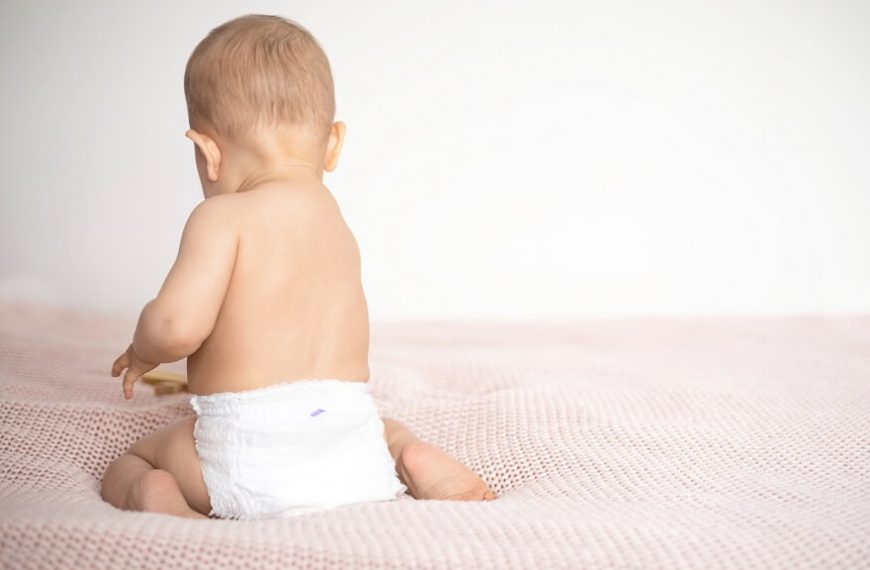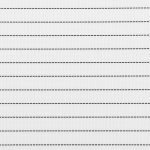Diaper rash, sometimes called nappy rash, is one of the parents’ most frequent worries. A frequent skin irritant that affects newborns and young children is diaperrash. Both the youngster and the carer may feel uncomfortable and distressed as a result. Effective prevention along withtreatment of nappy rash depends on having a thorough understanding of its signs, causes, and kinds. Whether you use disposable diapers orcloth, diaper rash on your baby’s bottom is pretty frequent yet preventable. It is characterised by dermatitis, which appears as red patches on irritated skin. In this blog, we will dig into diaperrash, looking at all of its facets and offering insightful information on how to treat it at home.
Wet or seldom changed diapers are often the cause of a nappy rash. But it can also be brought on by rubbing and sensitive skin. Although it usually affects infants, it can also harm adults who must wear diapers. The newborns in this condition constantly scream and feel uncomfortable, which is quite bothersome. The illness can be entirely cured with simple home treatments. Some tried-and-true methods to treat diaper rash include ointments,air drying, and more regular diaper changes.
Nappy Rash Symptoms:
- Redness and Inflammation:Red, inflamed skin around the diaper region is the classic sign of diaper rash. The afflicted area may also feel warm to the touch and seem bloated. Its primary symptom is red skin around the diaper region, including the thighs, buttocks, and genitalia.
- Skin Lesions:Diaper rash can develop into little red patches, pimples, or blisters in more severe cases. These sores might ache, leak, or even bleed.
- Irritability and Discomfort:When changing their diapers or when the rash is exposed to pee or faeces, infants and young children with diaper rash may act agitated, restless, or uncomfortable.
- Skin Chafing:The skin may become dry, flaky, and chapped as a result of nappy rash. The afflicted region may occasionally form fissures or cracks, which increases its susceptibility to infection.
Diaper Rash Types:
- Contact Dermatitis:This is the most typical kind of diaper rash, and it develops as a result of prolonged contact with the moisture, irritants, or chemicals found in diapers or wipes.
- Yeast Infection:A yeast infection in the nappy region can result from Candida albicans, a fungus that can flourish in warm, damp settings. Bright red, raised patches define this nappy rash, which may need special care.
- Allergic Dermatitis:Some ingredients in wipes,diapers, or detergents might cause allergic reactions in some newborns. The diaper region may become red, itchy, and swollen due to allergic dermatitis.
Diaper Rash Causes:
Diaper rash can occur for a variety of reasons, not only wearing a wet diaper for a prolongedperiod. There are other additional factors, such as:
- Irritation From Urine And Stool:If pee or faeces are in contact with a baby’s delicate skin for an extended period of time, it will get inflamed. As faeces are more irritating than pee, babies with frequent bowel movements or diarrhoea are more likely to get rashes.
- Rubbing:Avoid putting the child in clothing or too-tight diapers since they will rub against their skin and cause a rash.
- Allergy from a Particular Product:New items like baby wipes,fabric softener or bleach, disposable diapers,detergent,etc., may cause your infant to break out in a rash. Ingredients in baby powder and lotion may potentially contribute to this issue.
- Fungal or Bacterial Infection:Simple skin infections have the potential to spread to other places as well. Because it is often covered, the diapered region is a perfect environment for growing germs or yeast.
- Introduction To New Food:The consistency and composition of a baby’s faeces alter the moment they begin eating solid food. This increases the potential for a nappy rash to appear. Additionally, it could make stools more often, contributing to it. The newborns may have a nappy rash in response to the mother’s meals, even when nursing.
- Sensitive Skin:It is more likely to affect infants with skin problems such asseborrheic dermatitis or atopic dermatitis.
- Usage Of Antibiotics:Diaper rash is also more common in infants on antibiotics. Diaper rash can come from antibiotics killing the microorganisms that control yeast development. If their mother takes antibiotics, the babies who drink breast milk might also get it.
Also Read – Toddler not peeing but drinking
Baby Diaper Rash Treatment and Home Remedies
Diaper rash treatment frequently calls for a multifaceted strategy. Numerous home remedies can offer comfort and speed the healing process in addition to medical measures. However, speaking with your child’s paediatrician is crucial before attempting any new medication or solution. The following are some efficient methods for treating nappy rash:
- Frequent Diaper Changes:Changing your baby’s nappy often can help keep the region dry and clean, lowering the likelihood of irritation. Please do not forget to use soft wipes or cotton balls with warm water when changing a baby’s diaper. Ensure optimal diaper comfort for your baby with gentle materials, snug fit, and regular changes to keep their delicate skin happy and healthy.
- Air-Drying and Diaper-Free Time:Before applying a new nappy, let your baby’s bottom air-dry for a few minutes to speed up healing. Additionally, allowing the skin to breathe and aiding in drying off any wetness, diaper-free time is provided throughout the day.
- Barrier Creams and Ointments:Applying a barrier protection cream or ointment, such as petroleum jelly or zinc oxide, can separate the skin from moisture, minimizing friction and hastening the healing process.
- Avoid Irritants:To reduce exposure to possible allergens, use fragrance-free and hypoallergenic wipes,diapers, and laundry detergents. Use soft cloths instead of rough soaps or wipes with alcohol or scent.
- Topical Antifungal Creams:Your pediatrician might suggest using an antifungal cream if a yeast infection is suspected. For a safe and efficient course of therapy, strictly follow their advice.
- Loose-Fitting Diapers and Clothing:Choose loose-fitting diapers and breathable clothes to prevent friction and promote air circulation. This will assist in keeping the region dry and reduce discomfort.
When To See A Doctor? (H2)
You should see a pediatrician if the diaper rash disappears after a few days despite home remedies. If your child has a rash, have them inspected if:
- Seems severe.
- Regardless of home therapy, it does not go away.
- Accompanied by a scorching or painful urination or bowel movement.
- Oozes, bleeds, or itches.
- Accompanied by a fever.
Prescription drugs could occasionally be required to help the infant feel better. A doctor could advise:
- Light Steroid Cream.
- A Topical Antifungal.
- Oral or Topical Antibiotics.
Without a doctor or dermatologist’s prescription, you should not administer any medication or use any ointment. It is important to note that nappy rashes can occasionally be challenging to treat and may recur often.












